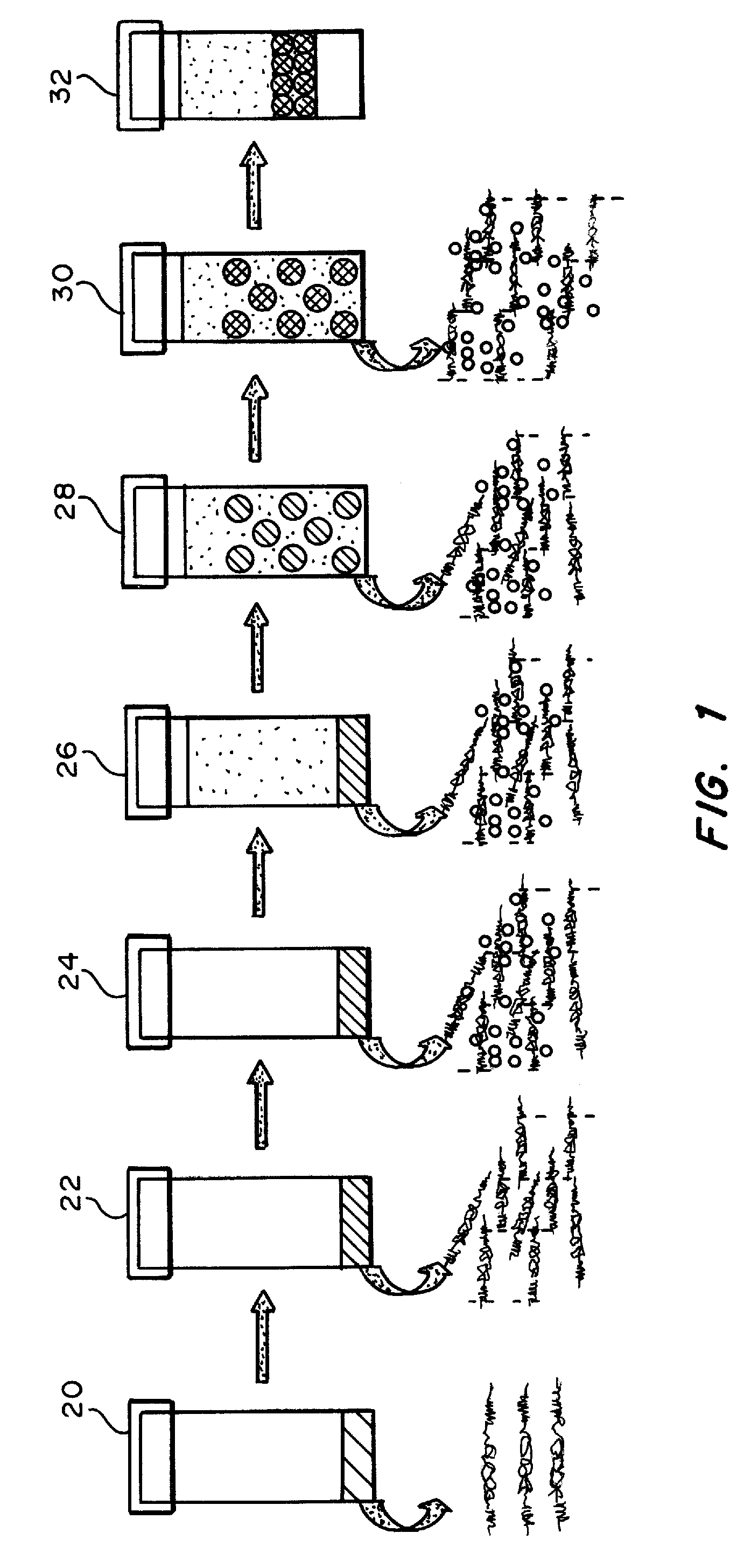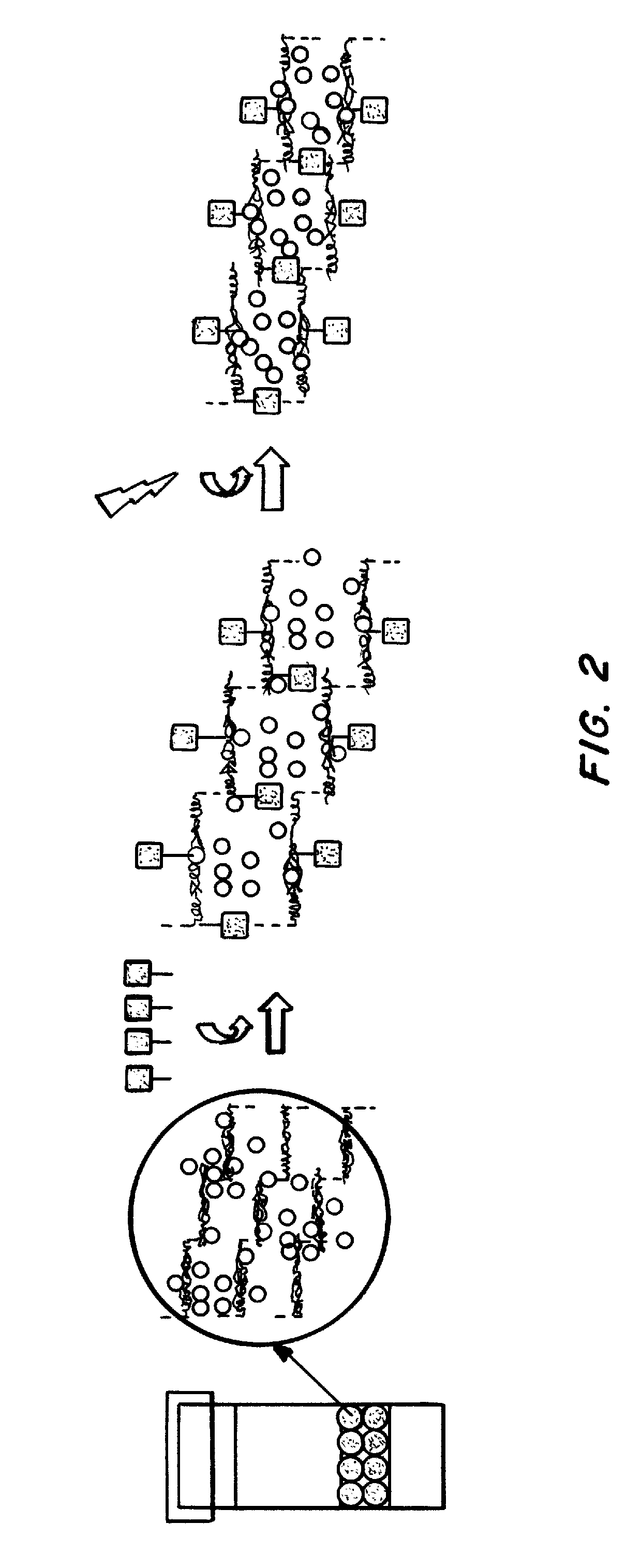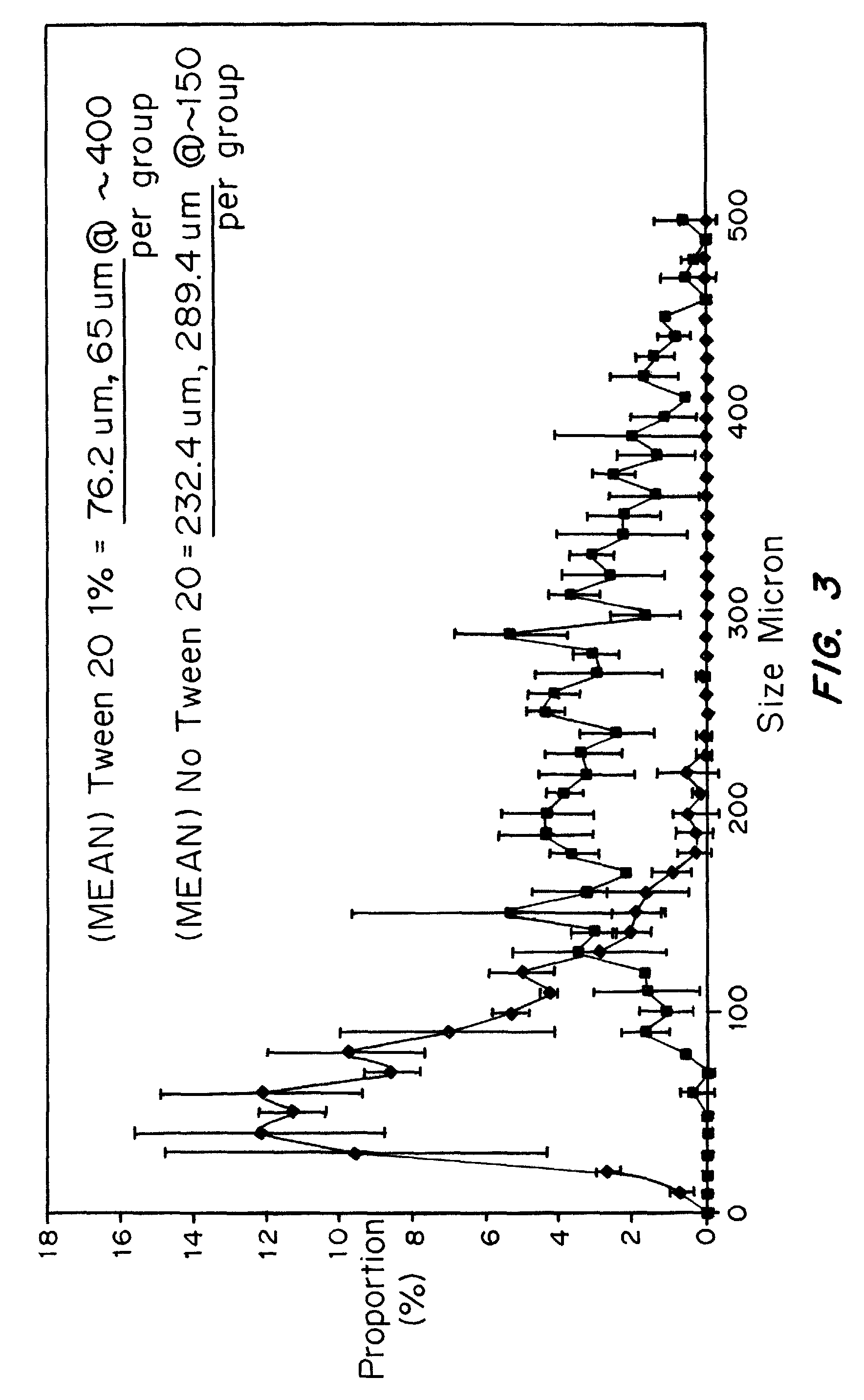Collagen-based microspheres and methods of preparation and uses thereof
a technology of collagen-based microspheres and microspheres, which is applied in the field of collagen-based microspheres, can solve the problems of poor shape and mechanical stability, reduced drug availability and bioactivity, and fragmented materials
- Summary
- Abstract
- Description
- Claims
- Application Information
AI Technical Summary
Benefits of technology
Problems solved by technology
Method used
Image
Examples
example 1
Preparation of Collagen Microspheres Incorporated with BSA or Myoglobin
[0085]Rattail collagen type I solution at a concentration of 7 mg / ml in 0.02N acetic acid was neutralized with 1N sodium hydroxide in the presence of 10× phosphate buffered saline with a final concentration of 0.5×. The gelling mixture was placed inside an ice water bath at 4° C. to slow down the polymerization rate for 1 minute. Sample proteins such as BSA and myoglobin can be incorporated. BSA (4 mg) was added to the mixture and thoroughly mixed well.
[0086]A mixture of olive oil and silicon oil at a ratio of 1:1 was laid down on the aqueous gelling mixture at a volume ratio of 6:1. A nonionic surfactant, Tween 20, was added to the aqueous phase before emulsification. The container of the mixture was placed on a mixing device. The mixture was agitated at maximal speed (3000 rpm) for 30 seconds. The emulsions formed were then placed in a 37° C. water bath to speed up the polymerization. The mixture was incubated ...
example 2
Photochemical Crosslinking of Collagen Microspheres
[0087]Microspheres obtained from procedures described in Example 1 were immersed in a solution of Rose Bengal photocrosslinker, “PC”) at a concentration of 0.001% (w / v) in water for 10 minutes. Excess Rose Bengal was discarded and the microspheres were rinsed. The microspheres were resuspended in water and placed in a 4-well plate culture dish. An Argon laser at 514 nm was used to irradiate the microspheres at 0.02 W / cm2 for 100 seconds. Immediately after the irradiation, the microspheres were rinsed in water. The microspheres were then ready for injection or subsequent experiments.
example 3
Dehydration of Collagen Microspheres
[0088]Microspheres were immersed in 100% alcohol for 30 minutes and the extraction of water from the microspheres was repeated for three times. A gradual increase in alcohol concentration was used to improve the microsphere surface smoothness. The collagen microspheres were immersed in 50% v / v alcohol for 20 minutes, 70% alcohol for 30 minutes twice, 80% alcohol twice, 90% alcohol twice and 100% alcohol twice.
PUM
| Property | Measurement | Unit |
|---|---|---|
| energy | aaaaa | aaaaa |
| irradiance | aaaaa | aaaaa |
| energy | aaaaa | aaaaa |
Abstract
Description
Claims
Application Information
 Login to View More
Login to View More - R&D
- Intellectual Property
- Life Sciences
- Materials
- Tech Scout
- Unparalleled Data Quality
- Higher Quality Content
- 60% Fewer Hallucinations
Browse by: Latest US Patents, China's latest patents, Technical Efficacy Thesaurus, Application Domain, Technology Topic, Popular Technical Reports.
© 2025 PatSnap. All rights reserved.Legal|Privacy policy|Modern Slavery Act Transparency Statement|Sitemap|About US| Contact US: help@patsnap.com



